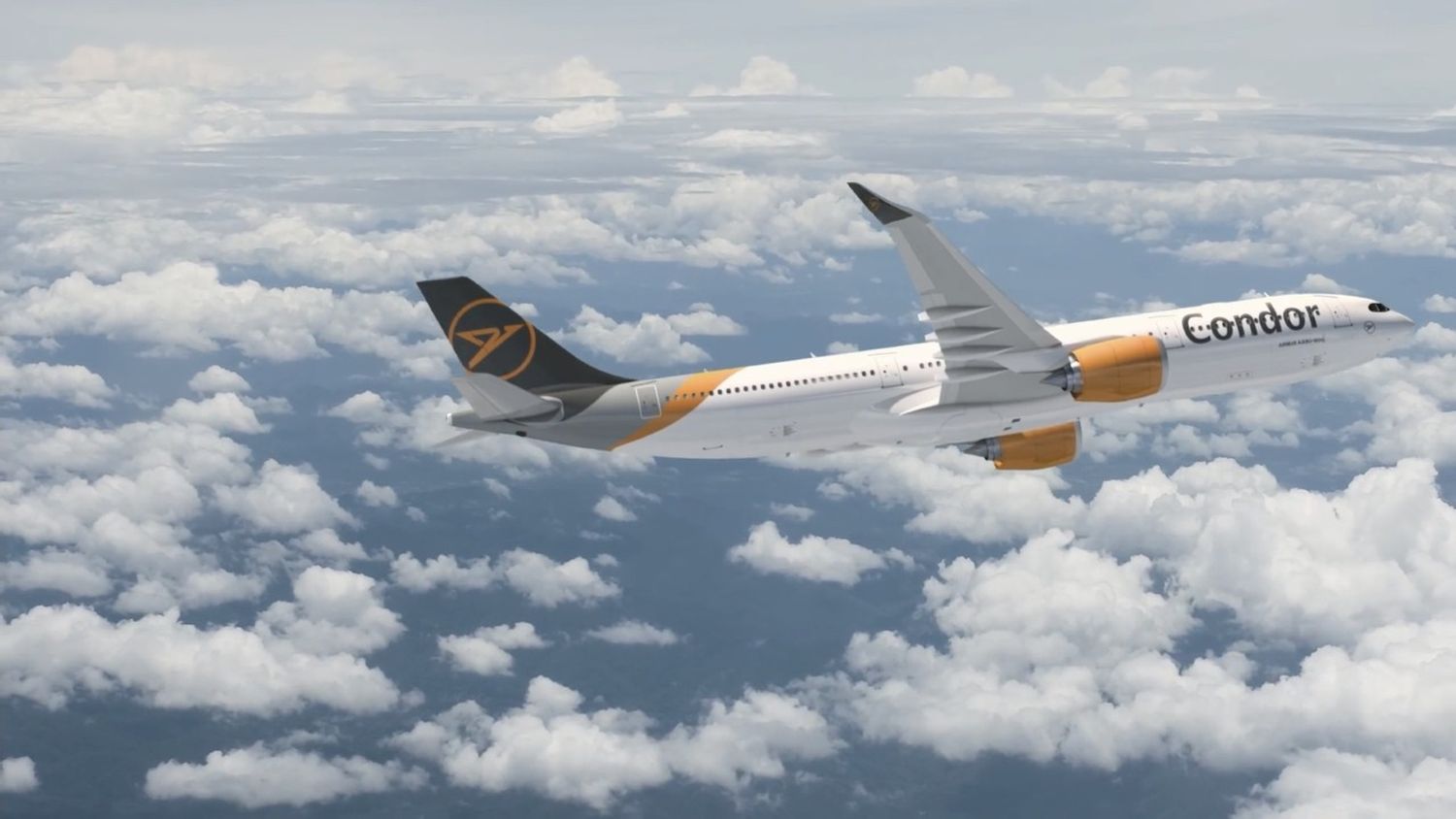After arduous negotiations, Condor finally chooses an aircraft to replace its classic Boeing 767-300ERs. It agreed with the European manufacturer the incorporation of 16 Airbus A330-900s that will be delivered between 2022 and 2024.
For several years the company postponed the replacement of its 26-year-old veteran Boeing 767s due to multiple complications. First its mother company, Thomas Cook, collapsed in 2019, leaving Condor on the brink.
In search of new shareholders, it began negotiations with the Polish Polska Grupa Lotnicza (PGL) in January 2020, which backs LOT Polish Airlines, and a similar order but from Boeing 787-9 was being considered. The coronavirus crisis ended up driving PGL away and Condor was left reeling.

With almost no money, the historic German vacation company was supported by loans that were made by the German state government.
Finally, in May 2021, Condor introduced a new majority shareholder at a press conference. The new name was the British financial company Attestor, which will acquire 51 percent of the airline’s shares.
Attestor was founded by the German investor Jan-Christoph Peters, who will contribute a capital of 200 million euros, in addition to another 250 million euros in own funds to carry out the modernization of the long-range fleet.
SG Luftfahrtgesellschaft, on behalf of the German federal and state governments, will hold the other 49 percent of the company’s shares.
Yesterday, July 27, the European Commission approved the incorporation of Attestor as a Condor investor, praising both companies for the restructuring that will be carried out to make the airline profitable.
«The aviation sector is particularly affected by the various travel restrictions that were necessary to contain the spread of the coronavirus,» said Commission Vice President for Competition Policy Margrethe Vestager.
«The measures we approved today will allow Germany to compensate Condor for damages caused directly by these restrictions. At the same time, Condor’s restructuring plan, which we also approved today, will secure the airline’s path to long-term profitability» Vestager finished.

Today, July 28, it was announced that the investor was serious and made the decision to order 16 Airbus A330-900s, which makes it the first German operator of the model and the fifth in Europe.
The first aircraft is expected to arrive in fall 2022, while the replacement of the entire long-haul fleet is scheduled to be completed in mid-2024.
Although all the details of the contracts were not disclosed, German local media reported that nine aircraft will be incorporated via leasing.
By using the new long-haul aircraft, Condor is not only lowering its emission values, but also its operating costs and further improving its already particularly tight cost structure.
«With our modern long-haul fleet, in the future we will be inextricably linked to sustainability and holidays with Condor,» announced Condor boss Ralf Teckentrup.
In addition, he announced that new cabins will be presented in Business, Premium Economy and Economy Class.
Condor, Airbus and its long-range fleet
Condor was founded in 1955, the first Airbus was received in 1979 with the arrival of the A300B4 to replace the Boeing 747-200B. Between 1975 and 1994 it operated the Airbus A310-300s, being the lasts of the European manufacturer´s first generation that the airline operated.
Since the 90s the airline has been supported by Boeing in favor of the Boeing 737-300, Boeing 767-300ER and Boeing 757-200. However, in a modernization stage, in 2004 the shareholder group Thomas Cook chose the Airbus A320 family to replace the Boeing 757s.

With this, it returned to operating with aircraft from the European manufacturer. Although, it kept the Boeing 767-300ERs for its long-haul operations.
Thomas Cook, prior to the collapse, decided to renovate the interiors of the Boeing 767 to extend the life of the model while they continued to negotiate any future replacements.
As an omen on today’s announcement, in the face of fleetingly growing demand between 2017 and 2019, it operated four Airbus A330-200s through wet-leasing to Air Transat.
The order of the A330neo implies a great leap in capacity for the airline, the Airbus has space for up to 300 seats in three classes in comparison to the 245 of the Boeing 767.
The vacation airline uses its wide-body fleet to destinations such as the Dominican Republic, Mexico, Cuba, the United States, Barbados, Aruba, Cuba, the Maldives, Thailand and the Seychelles. But, it is also used in those European destinations with high demand such as the Balearic Islands, the Canary Islands and Greece.
[videopress dmzauo3l]

Comentarios
Para comentar, debés estar registrado
Por favor, iniciá sesión